Are you planning a trip to the Amazon or simply curious about this natural wonder? If so, you might be wondering what kind of wildlife lives in the Amazon River and whether it’s safe to go for a swim. After all, it’s the world’s largest river by discharge volume and the second longest.
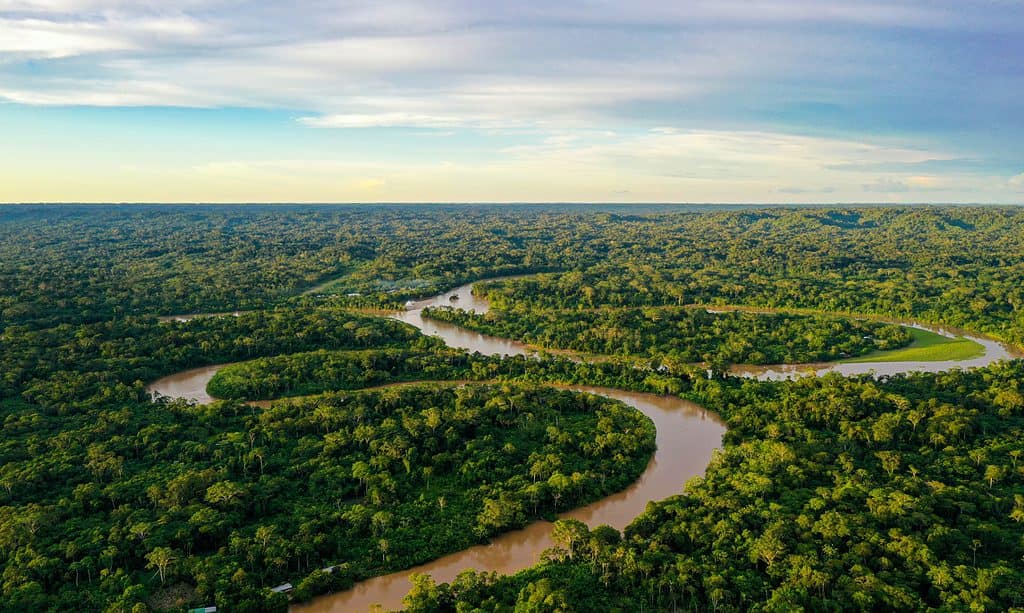
The Amazon rainforest is home to one-third of the planet’s land animal and plant species.
©iStock.com/JarnoVerdonk
With such incredible biodiversity comes potential danger. So let’s take a closer look at the wildlife that calls this river home and the potential risks and rewards of taking a dip.
Get ready to dive deep into the Amazon River and uncover its hidden treasures!
1. Fish
The Amazon River has diverse fish species, making it a prime destination for anglers and wildlife enthusiasts alike. Let’s take a closer look at the fish species that call the Amazon River home.
Common Fish Species
With over 3,000 known species of fish in the Amazon River, it’s hard to know where to start! Some of the most well-known fish species include piranhas, arapaima, and catfish.
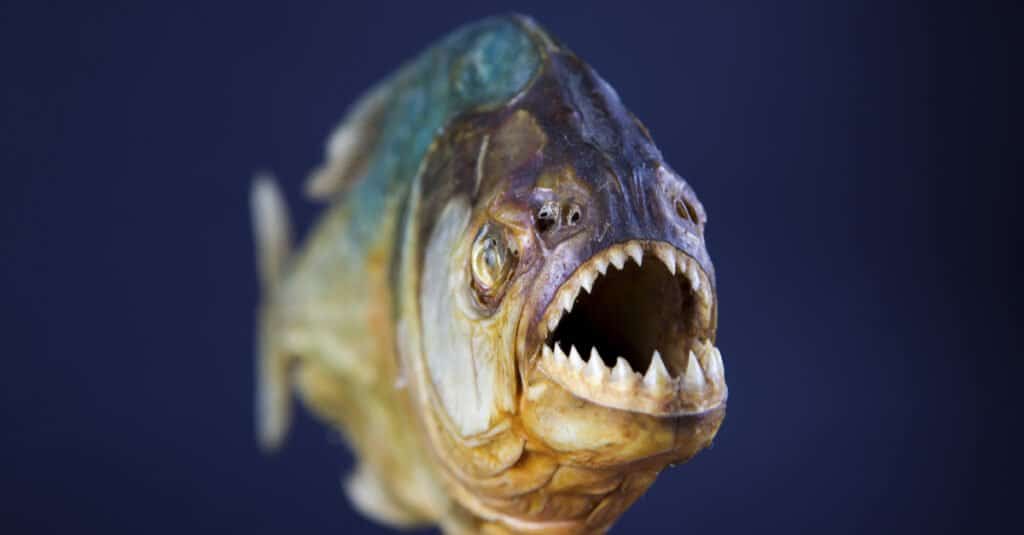
Piranhas (pictured here), arapaima, and catfish live in the Amazon River.
©simongee/Shutterstock.com
Unique and Endangered Fish Species
In addition to more common species, the Amazon River also has many unique and endangered fish species. Endangered fish species include the paiche and the tambaqui, which are prized by local communities for their meat and oil.
Importance of Fish Species in the Amazon River
Fish are a critical component of the Amazon River ecosystem. They provide food and nutrients for other species and local communities. They’re also important in nutrient cycling and the overall health of the river system.
2. Snakes
The Amazon River has a diverse array of snakes, many of which are venomous. While some visitors may be wary of encountering these creatures, they play an important role in the Amazon River ecosystem. So let’s take a closer look at the snakes that inhabit the Amazon River.
Common Snake Species
The Amazon River has various snake species, including the anaconda, boa constrictor, and coral snake. While many of these snakes are harmless to humans, some are venomous and can be dangerous.
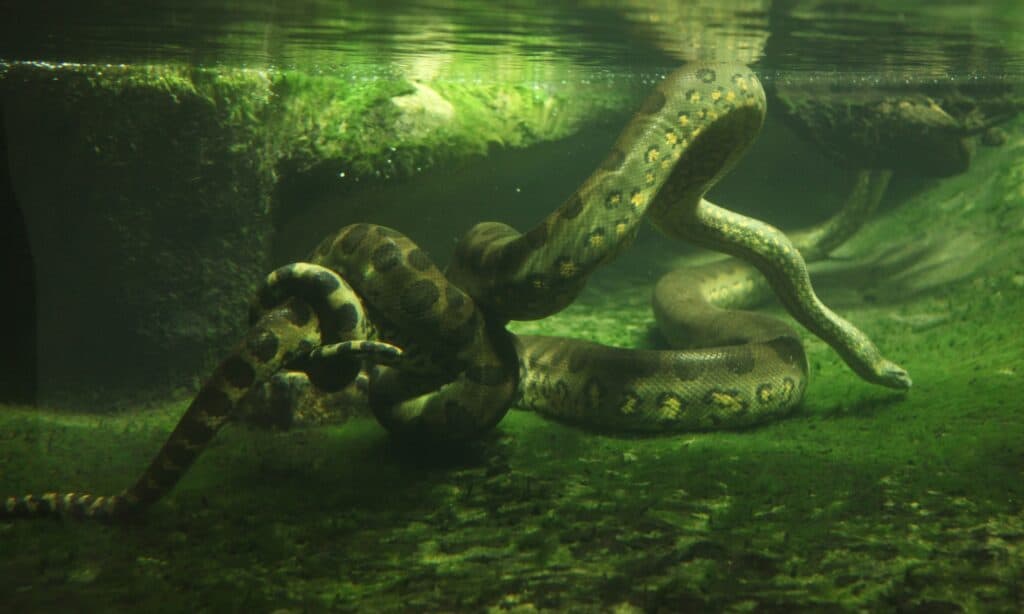
Endangered snake species in the Amazon River include the green anaconda (pictured) and emerald tree boas.
©Vladimir Wrangel/Shutterstock.com
Unique and Endangered Snake Species
In addition to more common snake species, the Amazon River also has many unique and endangered snake species. The bushmaster, for example, is a large and venomous snake that is rarely encountered. Other endangered snake species include the green anaconda and the emerald tree boa.
Importance of Snake Species in the Amazon River
Snakes play an important role in the Amazon River ecosystem. They serve as predators and help to regulate populations of other species. They also play a critical role in nutrient cycling and the overall health of the river system.
3. Other Reptiles
The Amazon River also has various other reptile species, from small and harmless to large and dangerous. Let’s take a closer look at the reptiles that call the Amazon River home.
Common Reptile Species
Reptiles are a diverse group of animals that are adapted to live in and around water. Some of the most common reptile species in the Amazon River include caimans, anacondas, and turtles.
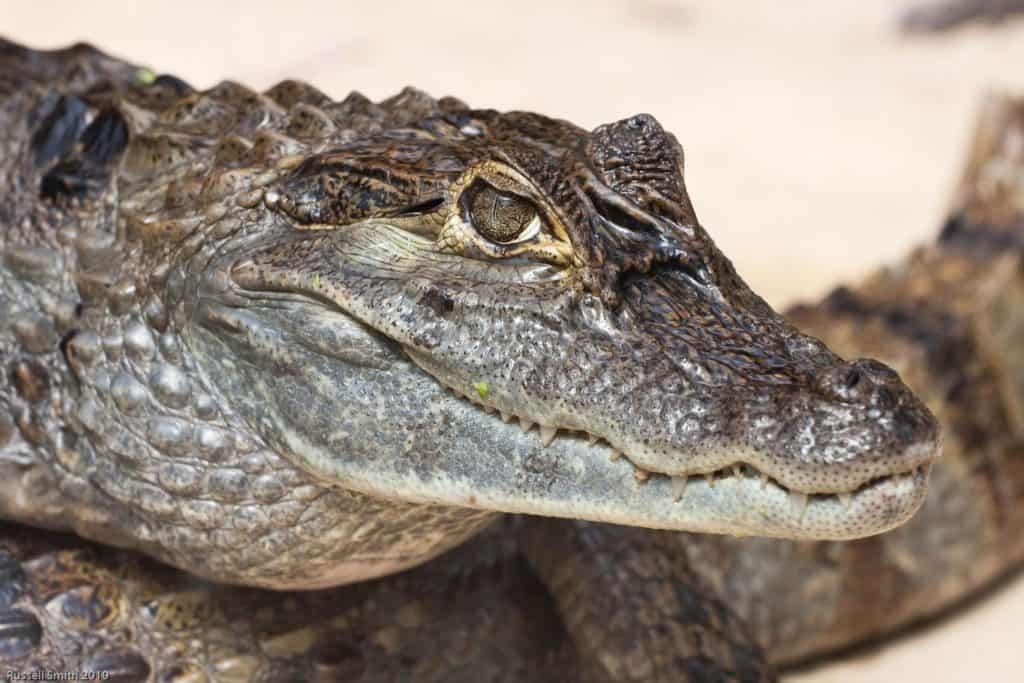
Caimans, which have a transparent third eyelid, live in the Amazon River.
Unique and Endangered Reptile Species
In addition to more common species, the Amazon River also has many unique and endangered reptile species, such as the black caiman.
Importance of Reptile Species in the Amazon River
Reptiles play an important role in the Amazon River ecosystem. They serve as predators and prey and help to regulate populations of other species. They also have cultural significance for many communities in the region.
4. Amphibians
The Amazon River isn’t just home to fish and reptiles but also a diverse array of amphibians. These fascinating creatures are adapted to life both in and out of the water. Let’s take a closer look at the amphibians that call the Amazon River home.
Common Amphibian Species
Amphibians are a unique group of animals that are adapted to live both on land and in water. Some of the most common amphibian species in the Amazon River include frogs, toads, and salamanders.
Unique and Endangered Amphibian Species
In addition to more common species, the Amazon River also has many unique and endangered amphibian species. The poison dart frog, for example, is a colorful and toxic species that can only be found in certain areas of the Amazon rainforest. Other endangered amphibian species include the giant monkey frog and the caecilian.
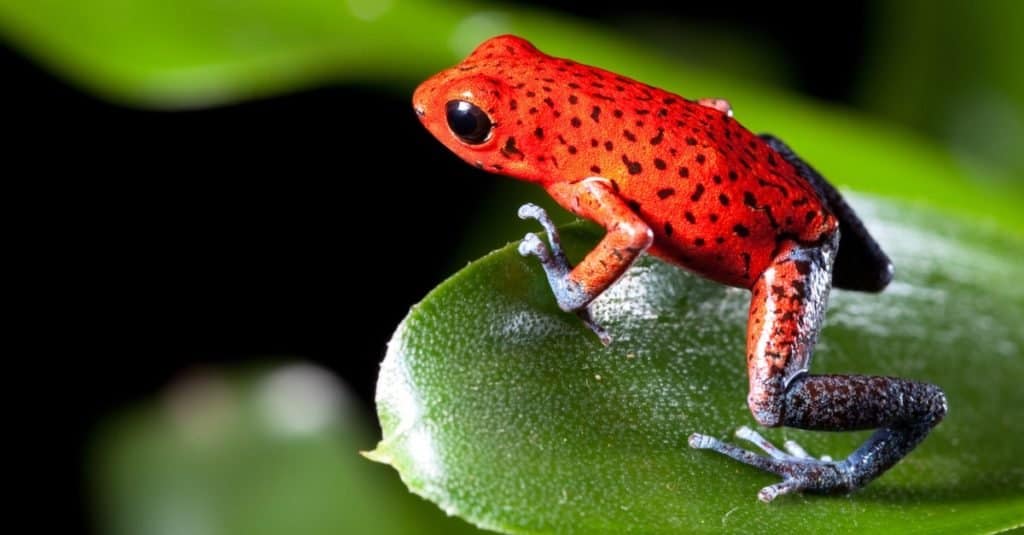
The poison dart frog is a colorful and toxic species that can only be found in certain areas of the Amazon rainforest.
©Dirk Ercken/Shutterstock.com
Importance of Amphibian Species in the Amazon River
Amphibians play an important role in the Amazon River ecosystem, serving as predators and prey and helping to regulate populations of other species. They are also indicators of ecosystem health and can help scientists understand the impacts of environmental changes on the region.
5. Mammals
The Amazon River has a diverse array of mammal species. They range from small and elusive to large and charismatic. Let’s take a closer look at the mammals that call the Amazon River home.
Common Mammal Species
Mammals are a group of animals that are characterized by their fur, mammary glands, and ability to regulate their own body temperature. Some of the most common mammal species in the Amazon River include monkeys, sloths, and river dolphins.

River dolphins are common mammals that live in the Amazon River.
©COULANGES/Shutterstock.com
Unique and Endangered Mammal Species
In addition to more common species, the Amazon River is also home to many unique and endangered mammal species. The Amazonian manatee, for example, is a gentle and rare species that can only be found in certain areas of the Amazon River system. Other endangered mammal species include the jaguar and the giant river otter.
Importance of Mammal Species in the Amazon River
Mammals play an important role in the Amazon River ecosystem, serving as predators and prey and helping to regulate populations of other species. They are also culturally significant for many communities in the region.
6. Birds
The Amazon River is a haven for birdwatchers and ornithologists, with hundreds of species of birds calling the region home. So let’s take a closer look at the birds that inhabit the Amazon River.
Common Bird Species
Birds are a diverse group of animals that are adapted to life both in and out of the water. Some of the most common bird species in the Amazon River include herons, kingfishers, and macaws.
Unique and Endangered Bird Species
In addition to more common species, the Amazon River is also home to many unique and endangered bird species. The harpy eagle, for example, is a powerful and rare bird of prey that can only be found in certain areas of the Amazon rainforest. Other endangered bird species include the hoatzin and the Amazonian umbrella bird.
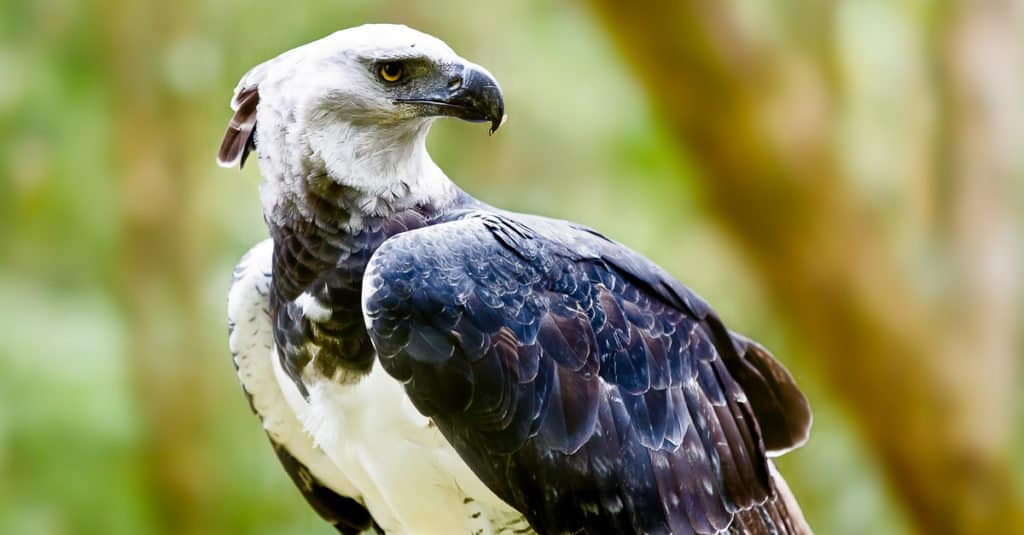
The majestic Harpy Eagle can live up to 35 years in the wild.
©MarcusVDT/Shutterstock.com
Importance of Bird Species in the Amazon River
Birds play an important role in the Amazon River ecosystem, serving as pollinators and seed dispersers and helping to regulate populations of other species. They are also culturally significant for many communities in the region.
7. Insects
Insects are the most diverse group of animals on the planet, and the Amazon River is home to a vast array of insect species. Let’s take a closer look at the insects that inhabit the Amazon River.
Common Insect Species
Insects are a group of animals that are characterized by their three-part body structure, six legs, and wings (in most species). Some of the most common insect species in the Amazon River include dragonflies, butterflies, and beetles.
Unique and Endangered Insect Species
In addition to more common species, the Amazon River is also home to many unique and endangered insect species. The giant water bug, for example, is a large and fascinating predatory insect that can only be found in certain areas of the Amazon River system. Other endangered insect species include the emerald swallowtail and the Amazonian giant centipede.

Giant centipedes and water bugs slither in and around the Amazon River.
©skifbook/Shutterstock.com
Importance of Insect Species in the Amazon River
Insects play an important role in the Amazon River ecosystem, serving as pollinators and decomposers and helping to regulate populations of other species. They also play a critical role in nutrient cycling and the overall health of the river system.
8. Invertebrates
The Amazon River is not just home to vertebrates but also a vast array of invertebrate species. These fascinating creatures play a critical role in the ecosystem, often serving as food sources for larger animals. Let’s take a closer look at the invertebrates that inhabit the Amazon River.
Common Invertebrate Species
Invertebrates are animals that lack a backbone. They include various organisms, such as crustaceans and mollusks. Some of the most common invertebrate species in the Amazon River include river snails and crayfish.
Unique and Endangered Invertebrate Species
In addition to more common species, the Amazon River is also home to many unique and endangered invertebrate species. For example, the Amazonian giant centipede and the freshwater jellyfish are endangered invertebrate species found in certain areas of the Amazon River system.

Freshwater
jellyfish
weigh anywhere from 0.11 to 0.18 ounces.
©Rostislav Stefanek/Shutterstock.com
Importance of Invertebrate Species in the Amazon River
Invertebrates play an important role in the Amazon River ecosystem, serving as food sources for larger animals and helping to regulate populations of other species. They also play a critical role in nutrient cycling and the overall health of the river system.
Is the Amazon River Safe to Swim In?
While the Amazon River is a stunning and unique ecosystem, it’s important to be aware of potential hazards when visiting or swimming in the river. Let’s take a closer look at some of the potential hazards of swimming in the Amazon River.
Strong Currents and Underwater Obstacles
The Amazon River is massive, and its currents can be deceptively strong. Additionally, there may be submerged obstacles, such as logs or rocks, that can be dangerous to swimmers.
Piranhas and Other Predators
While attacks on humans by piranhas are rare, they do occur. In addition, other predators in the Amazon River, such as caimans and anacondas, can also pose a threat to swimmers.
Waterborne Illnesses
Waterborne illnesses such as cholera and typhoid fever can be contracted from swimming or consuming contaminated water in the Amazon River. Therefore, it’s important to take precautions such as filtering or boiling water before consumption.
Poisonous Plants and Animals
The Amazon River is home to various poisonous plants and animals, including some species of frogs and fish. Therefore, it’s important to be aware of potentially toxic species and avoid handling them.
Key Takeaways
As we wrap up our exploration of the Amazon River, it’s clear that it is truly a marvel of the world. With its incredible biodiversity and vital role in the surrounding ecosystem, it’s no wonder that so many are drawn to its waters. However, as we’ve discussed, there are also potential hazards and risks that must be considered before taking a swim. The Amazon River is home to dangerous aquatic animals, waterborne diseases, and pollution concerns that require caution and preparation.
While swimming in the Amazon River is not recommended, there are still many ways to appreciate and explore this unique environment safely and responsibly. Guided boat tours, visiting nearby tributaries and lakes, ecotourism, and supporting local conservation efforts are just a few alternatives that offer unforgettable experiences without the added risks.
The photo featured at the top of this post is © iStock.com/gustavofrazao
Thank you for reading! Have some feedback for us? Contact the AZ Animals editorial team.






